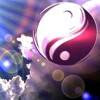Chemotherapy, broadly speaking, is any regimen of therapy that makes use of chemicals to try to fight a disease. More specifically, it usually refers to a specific set of practices in which chemicals are used to help fight cancer. Since the widespread adoption of chemotherapy to fight cancer, the more general use of the term is rarely used outside of medical circles.In the 1940s, a chemical used during wartime, nitrogen mustard, was found to be somewhat effective in treating
lymphoma. Ultimately, the effects turned out to be very temporary, but it nonetheless demonstrated to the medical establishment that chemicals could be used to suppress, and perhaps even to eliminate, cancer. Throughout the late 1940s and early 1950s, further research was conducted on a wide array of cancers, utilizing different chemical strategies.By the late 1950s, a treatment first used in the 1940s on children with
leukemia was found to be effective in completely destroying a type of tumor called choriocarcinoma. This was the first great victory for chemotherapy in curing cancerous elements, and it helped push along the building enthusiasm for chemical cures for cancer. The 1950s also heralded what was perhaps the peak of the West’s idealization of chemicals of all stripes, and this general enthusiasm for modernity was a driving force behind funding and widespread support for chemotherapy.
In the mid-1960s, after a number of subsequent breakthroughs in various individual areas of cancer research, a new technique was developed that would prove to be one of the most important ever for the field of cancer research. This was combinational chemotherapy, by which a number of different chemicals were administered to attack different trouble regions and to bolster one another in the event that the cancer cells mutated to resist a single chemical. By the late 1960s, this technique had proven effective in curing a significant portion of lymphoma patients to whom it was administered.Chemotherapy works by

impairing the reproduction of the fastest-splitting cells, a property common in cancerous cells. Unfortunately, a number of other cells also have a high rate of
mitosis, and are therefore targeted by many chemotherapy treatments as well. Hair cells are perhaps the most visible of these, as many subjects of chemotherapy lose their hair as their drug regimens attack the cells responsible for hair growth along with cancerous cells.Chemotherapy has a number of negative side effects, including severe nausea, bowel problems, a wide range of toxic effects, hemorrhaging, and a sometimes fatal suppression of the
immune system. Chemotherapy, although relatively successful, is certainly not a
silver bullet for fighting cancer, and many people consider the risks and potential damage not worth the chance of cure. For all its ills, however, chemotherapy offers the best hope for many victims of cancer, and as a field it is constantly innovating and progressing.
FROM:
http://www.wisegeek.com/what-is-chemotherapy.htm************************************
Amazing-Spiritual
Photo: http://halusi.blogspot.com/
************************************





